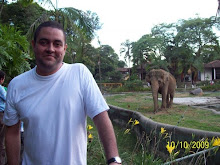INDIA
It is a country in South Asia. It is the 7th largest country by geographical area, the 2nd most populous country with over 1.18 billion people, and the most populous democracy in the world. It is bordered by Pakistan to the west; China, Nepal, and Bhutan to the north; and Bangladesh and Burma to the east. India is in the vicinity of Sri Lanka, and the Maldives in the Indian Ocean.
It is a region of historic trade routes and vast empires, the Indian subcontinent was identified with its commercial and cultural wealth for much of its long history. Four major religions, Hinduism, Buddhism, Jainism and Sikhism originated here, while Zoroastrianism, Judaism, Christianity and Islam arrived in the first millennium and shaped the region´s diverse culture. Gradually annexed by the British East India Company from the early eighteenth century and colonised by the United Kingdom from the mid-nineteenth century, India became an independent nation in 1947 after a struggle for independence that was marked by widespread non-violent resistance.
India is a republic consisting of 28 states and seven union territories with a parliamentary system of democracy. The Indian economy is the world´s eleventh largest economy by nominal GDP and the 4th largest by purchasing power parity. Economic reforms since 1991 have transformed it into one of the fastest growing economies in the world; however, it still suffers from poverty, illiteracy, corruption, disease, and malnutrition. India is a nuclear weapon state and has the 2nd largest standing army in the world. A pluralistic, multilingual and multiethnic society, India is also home to a diversity of wildlife in a variety of protected habitats.
In the 20th century, a nationwide struggle for independence was launched by the Indian National Congress and other political organisations. Indian leader Mahatma Gandhi led millions of people in several national campaigns of non-violent civil disobedience.
On August 15th 1947, India gained independence from British rule, but at the same time the Muslim-majority areas were partitioned to form a separate state of Pakistan. On January 26th 1950, India became a republic and a new constitution came into effect. Since independence, India has faced challenges from religious violence, casteism, naxalism, terrorism and regional separatist insurgencies, especially in Jammu and Kashmir and Northeast India.
India's culture is marked by a high degree of syncretism and cultural pluralism. It has managed to preserve established traditions while absorbing new customs, traditions, and ideas from invaders and immigrants and spreading its cultural influence to other parts of Asia, mainly South East and East Asia. Traditional Indian society is defined by relatively strict social hierarchy. The Indian caste system describes the social stratification and social restrictions in the Indian subcontinent, in which social classes are defined by thousands of endogamous hereditary groups, often termed as jātis or castes.
___________
https://www.cia.gov/library/publications/the-world-factbook/geos/in.html

___________
https://www.cia.gov/library/publications/the-world factbook/maps/maptemplate_in.html
ORGANISATIONAL CULTURE
Diversity: The motor moving India´s development
Diverse culture is a major strength; it makes it easier to the development and opening of new economies and new markets. And we have here a vast Middle class as the largest one boosting the economy. This the key factor of why India is advancing so much.
Thanks to India’s economic expansion, industries are paying less attention in castes, and are looking beyond their traditional sources of employees. And Managing Diversity is a very important to enterprises dealing with India´s social requirements.

___________
http://truereligiondebate.files.wordpress.com/2008/04/caste3.jpg
HR CHALLENGES AT COMPUTER AGE MANAGEMENT SERVICES (P) LTD
India has become, perhaps, the most important player in the industry of global outsourcing, and specifically on software development.
This article talks about a specific software developer in a province in India and how in a short period of time it has grown greatly. And it focuses on the leadership style of the organisation and how Human resource management recruits workers, as well as the challenges that the organisation faces in time.
CAMS (Computer Age Management Services) a software developer has grown and spread throughout India. It works towards achieving a “Knowledge enterprise”, or in other words, an exchange of information among employees to try to create a more knowledgeable work force.
___________
Dr. T.G. Vijaya, Dr. Brian D´Netto, Dr. Juan España, 2007.
QUESTION
What do you think are the reasons behind the fast-growth outsourcing industry in India ?.
Being the world´s second highly populated country, human resources are a boom by itself. India is proud of the abundance and easy availability of its highly qualified and technically skilled English speaking computer professionals; who are key players to success in the field of outsourcing to India. Also, significant cost saving can be achieved by outsourcing to India, owing to the wide gap between the personal costs in India and that of the developed countries.

___________
http://www.webketu.com/wp-content/uploads/2009/10/india_outsourcing_time_magazine.jpg

No comments:
Post a Comment